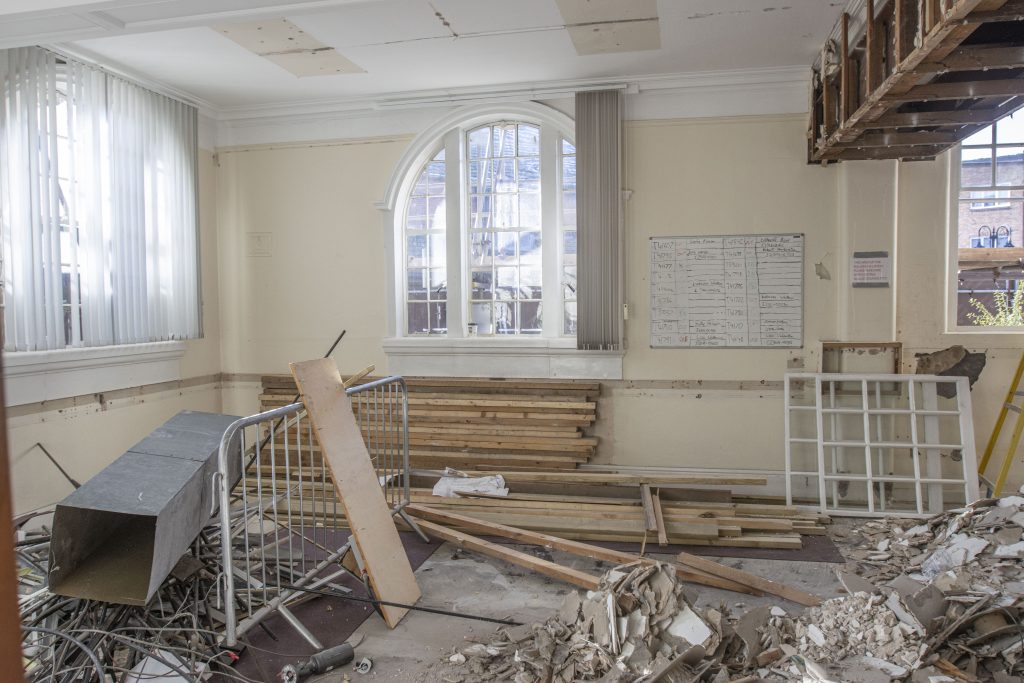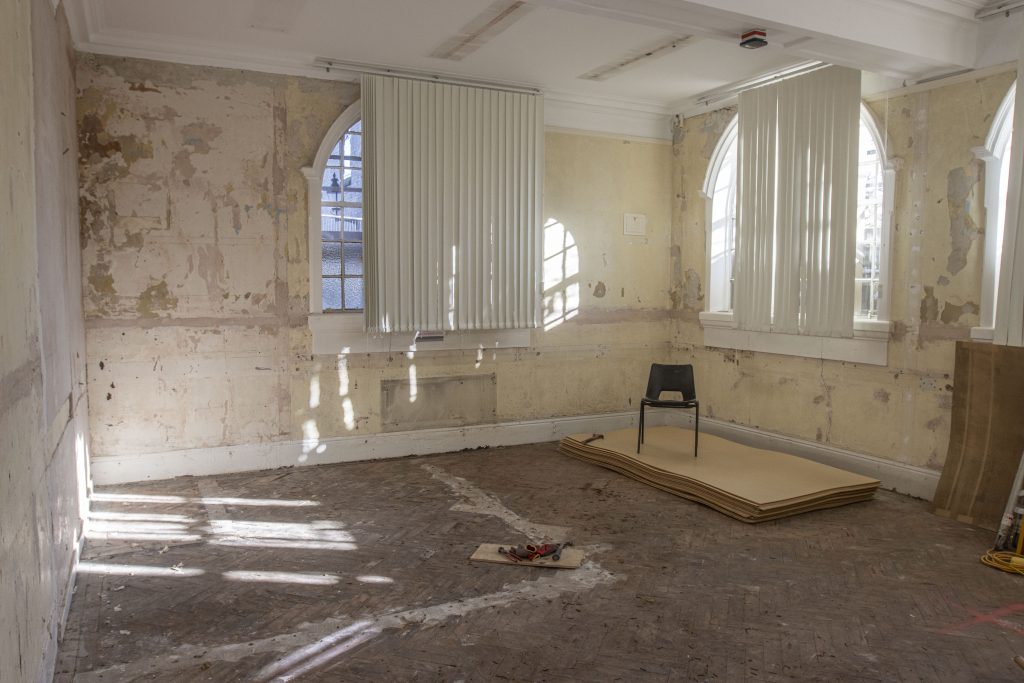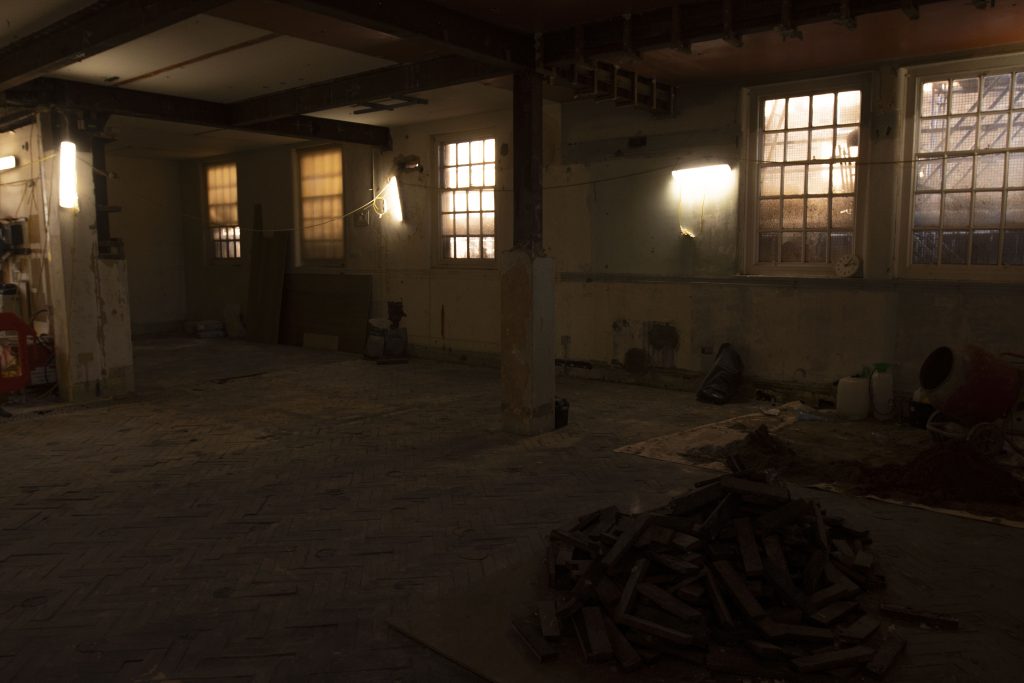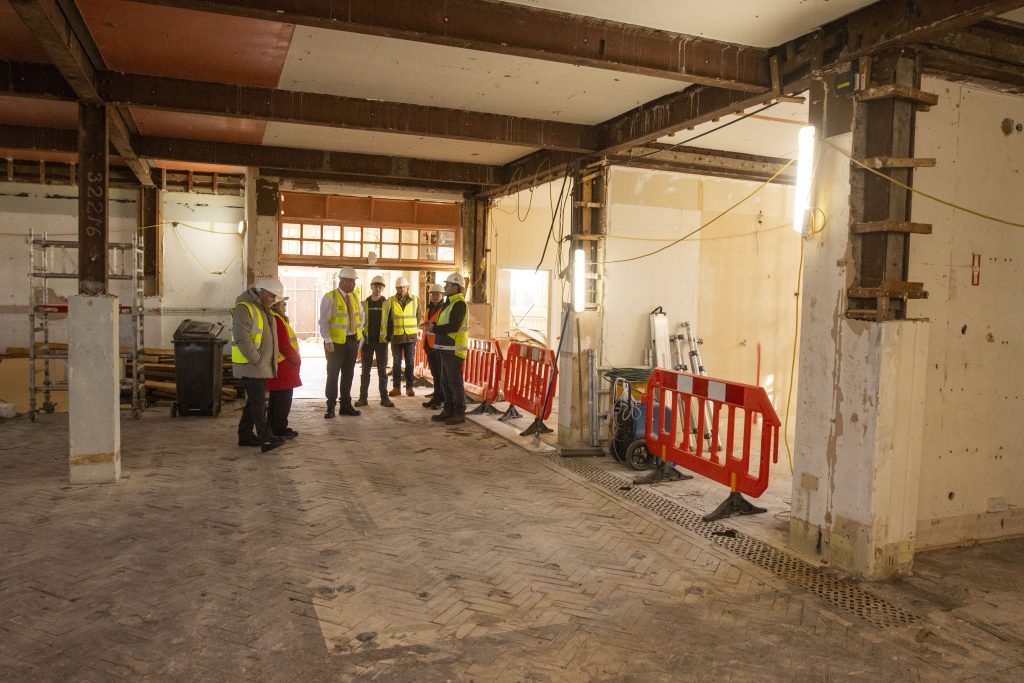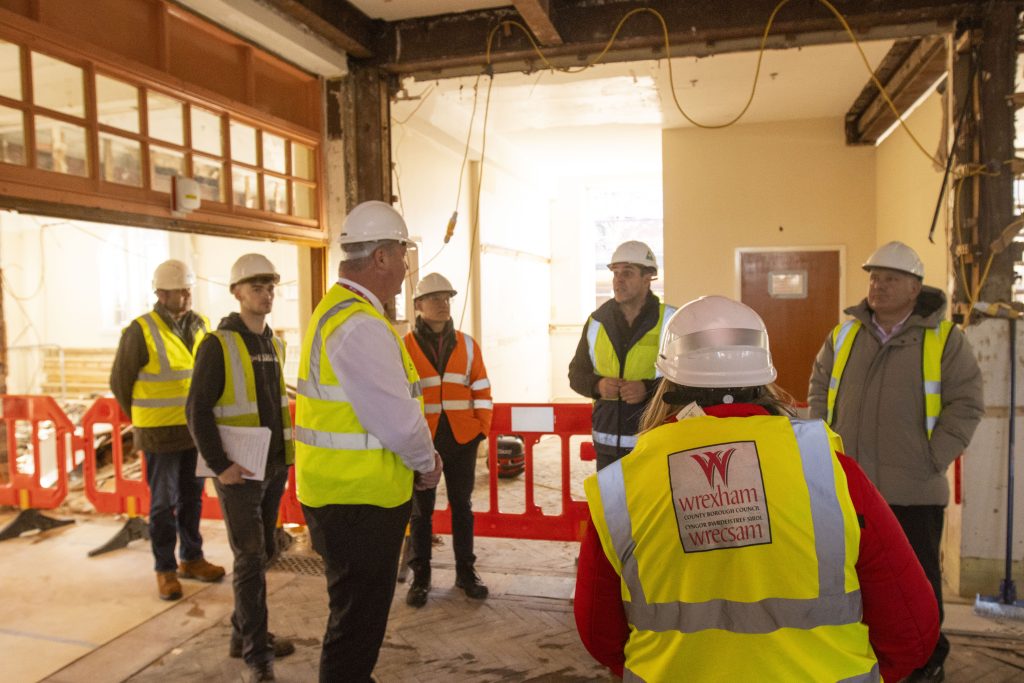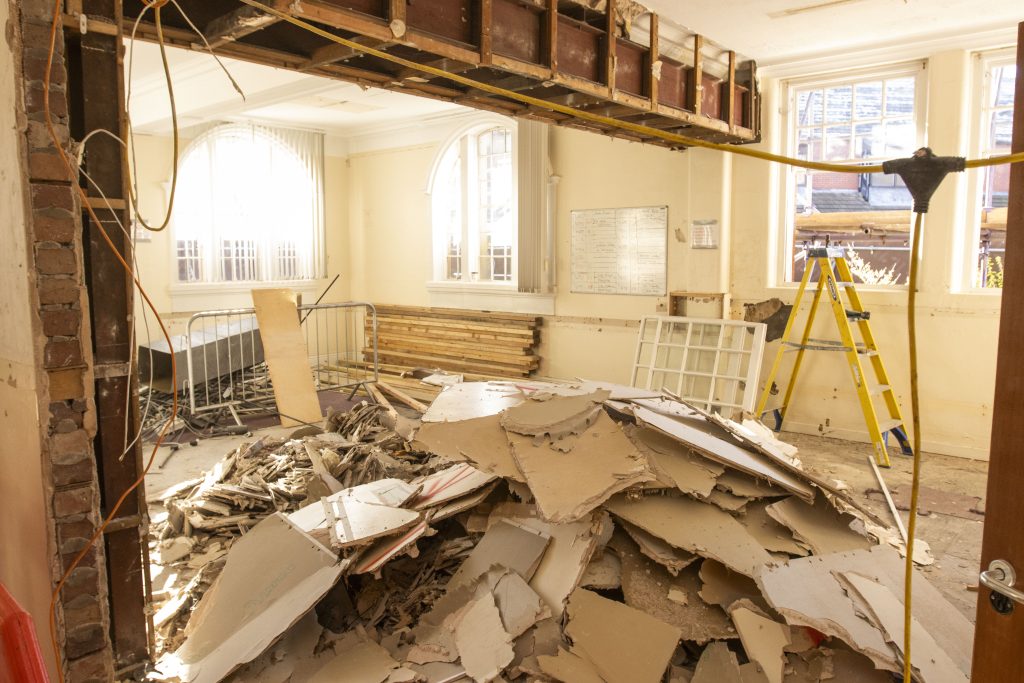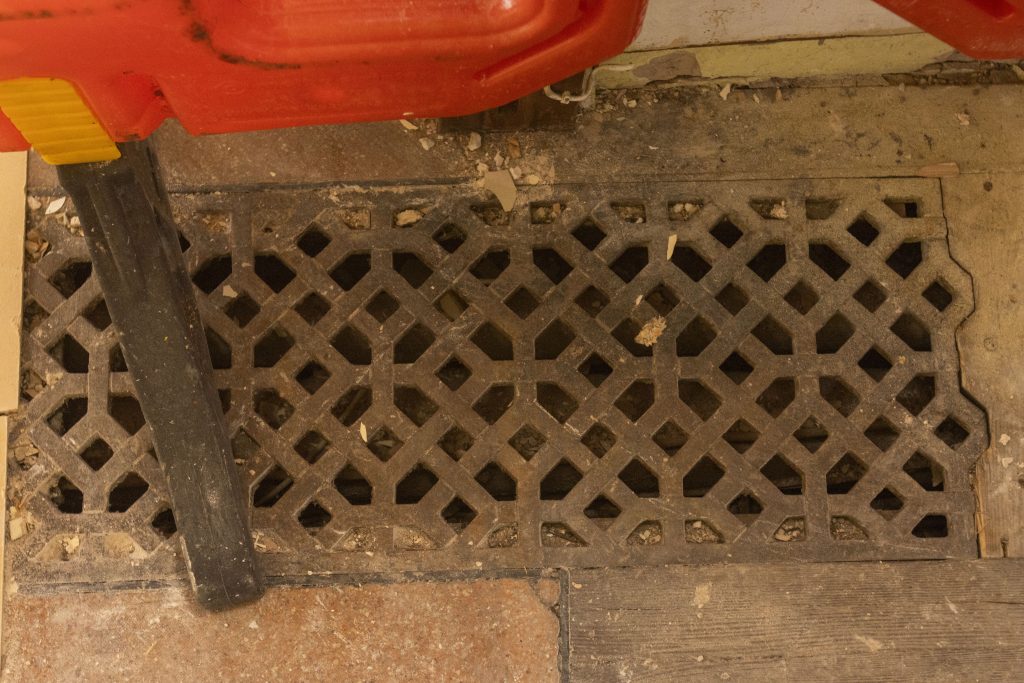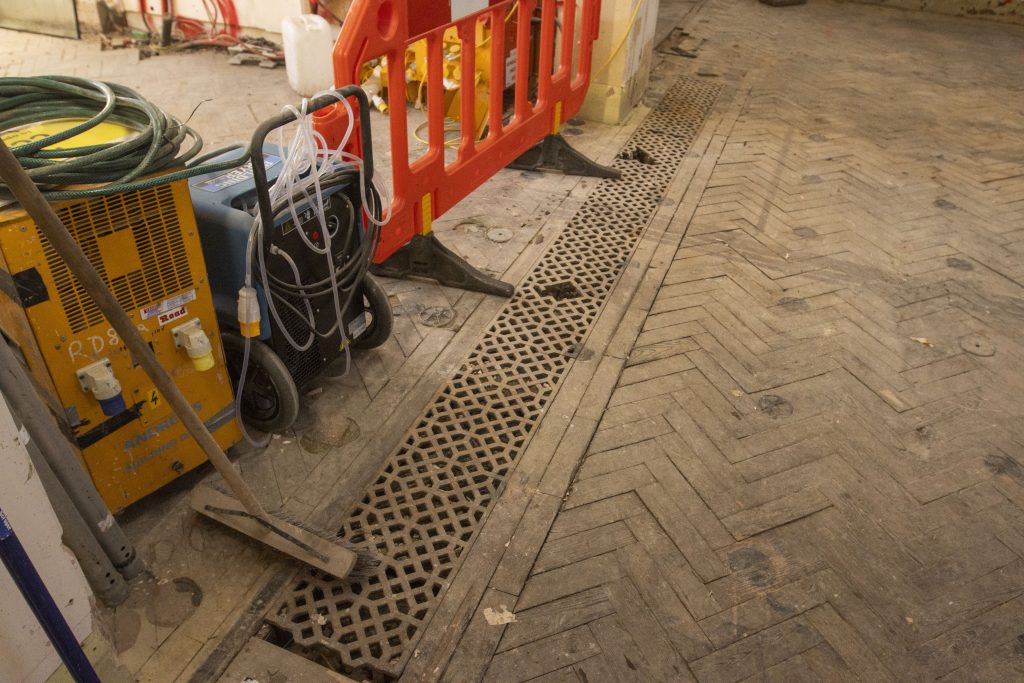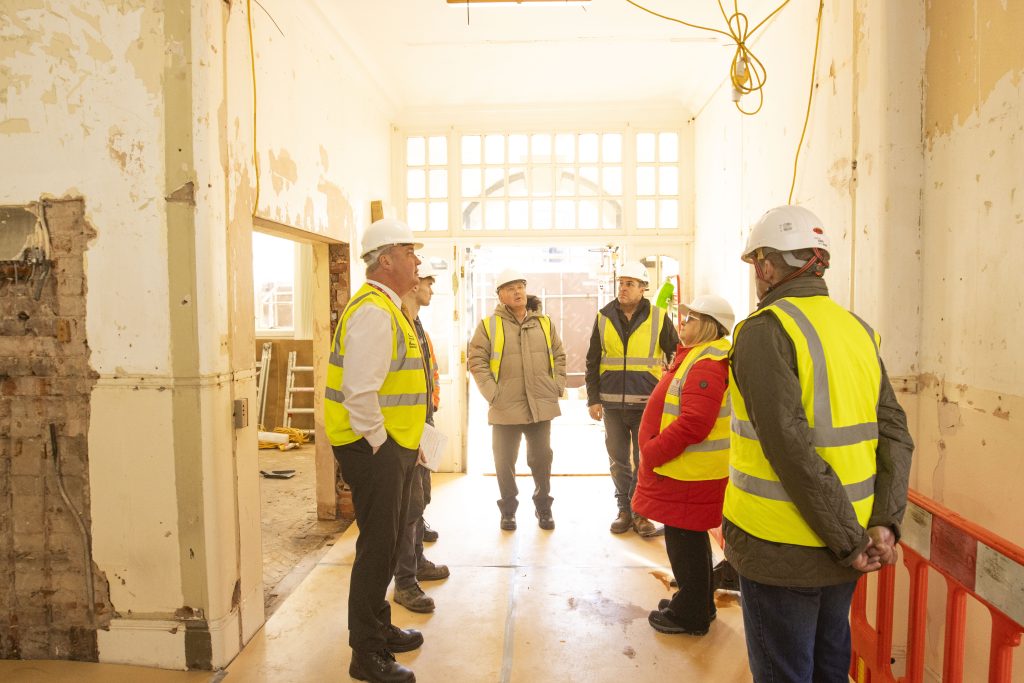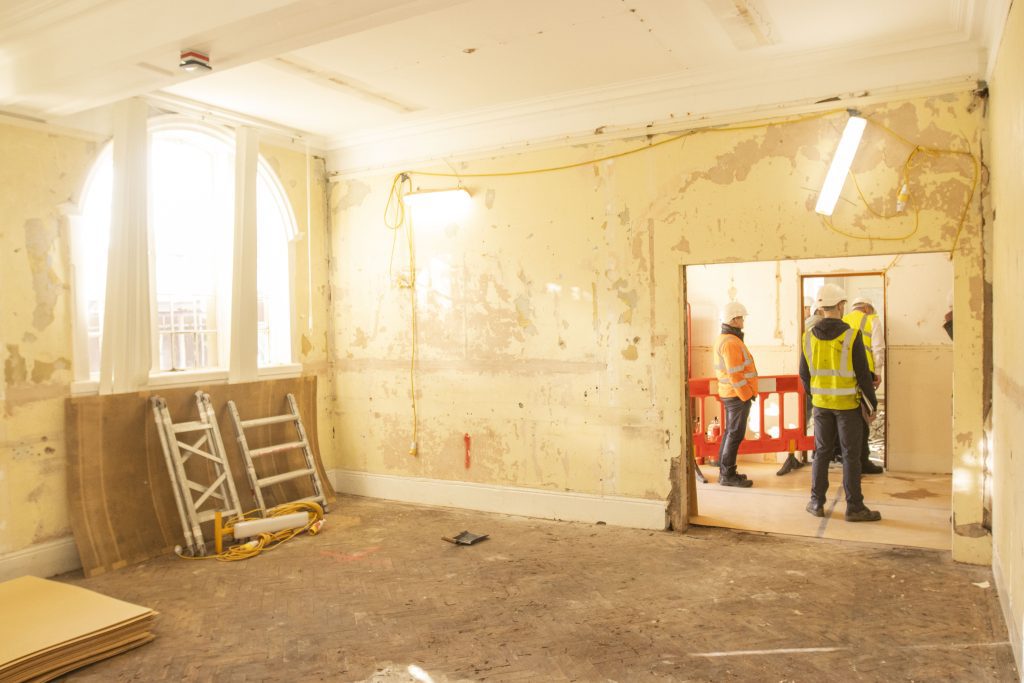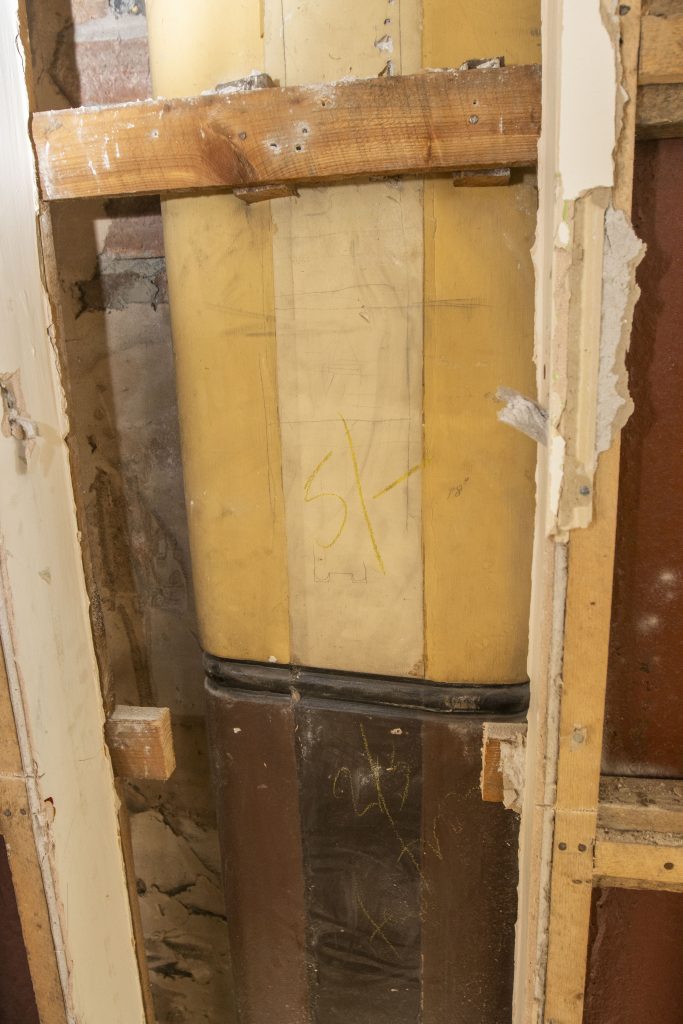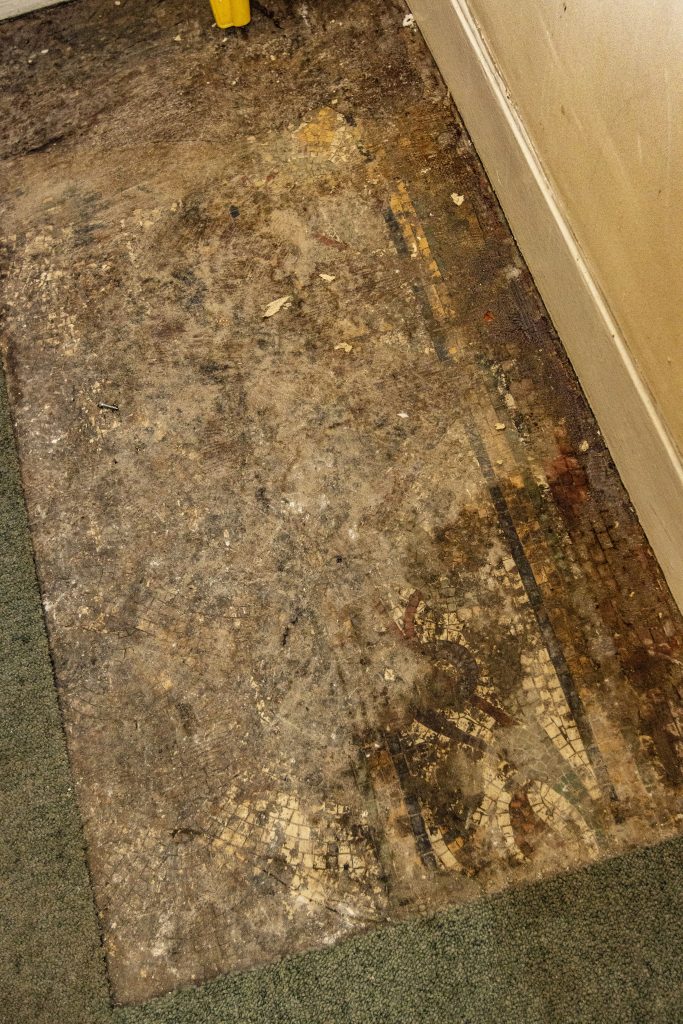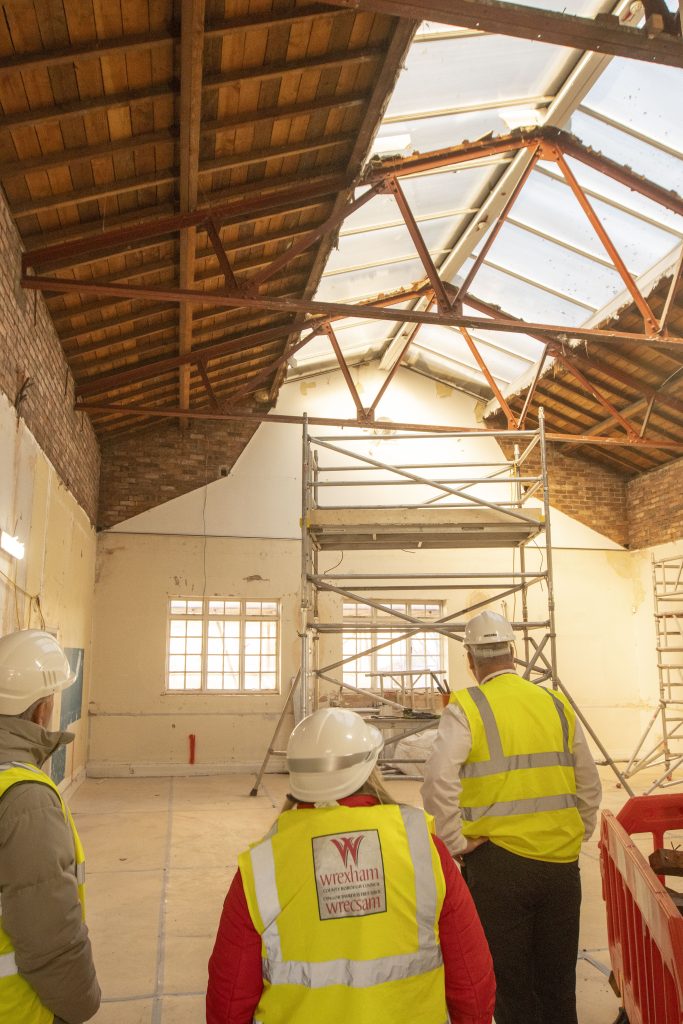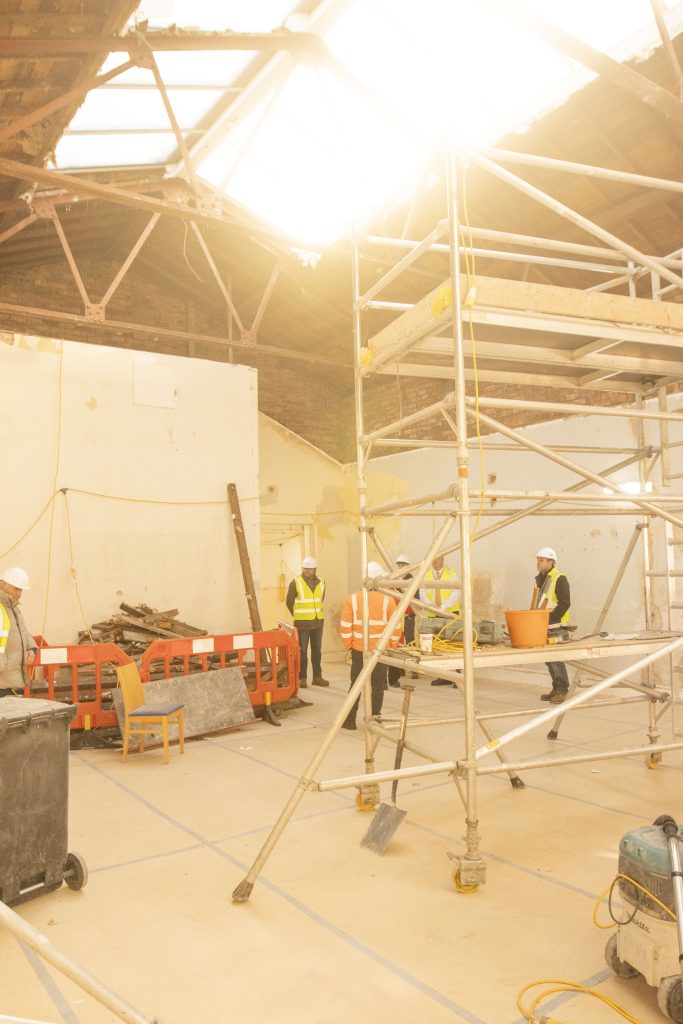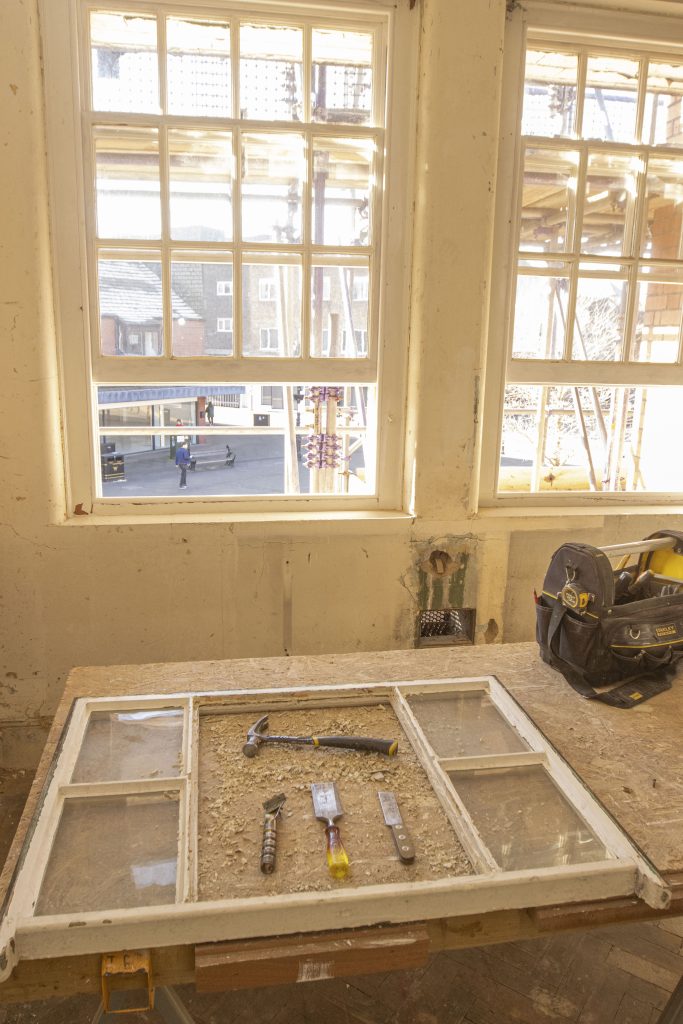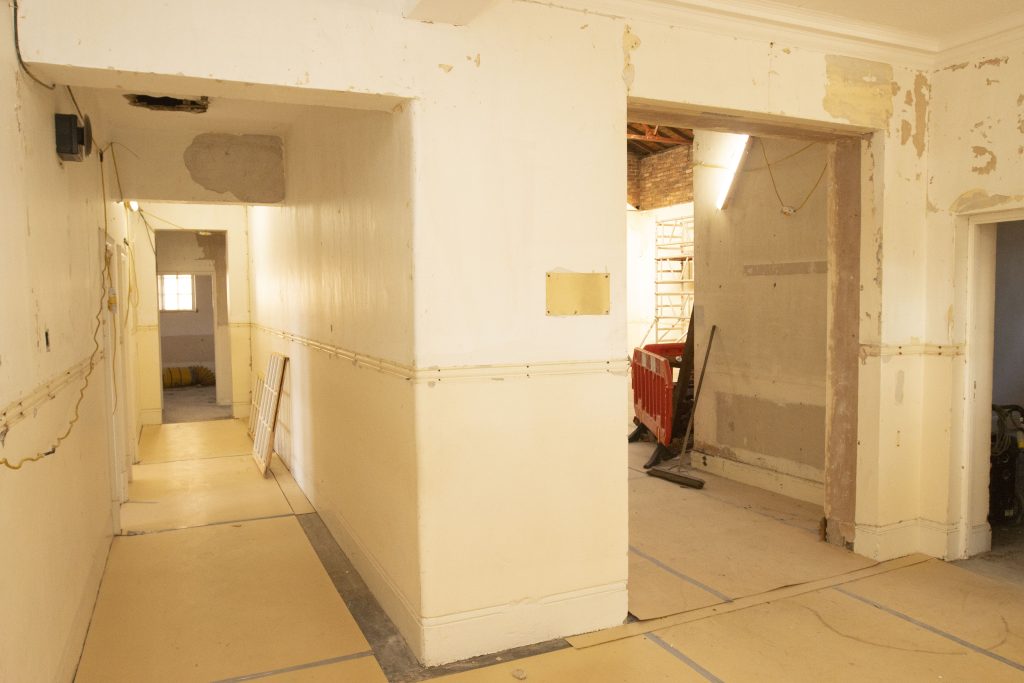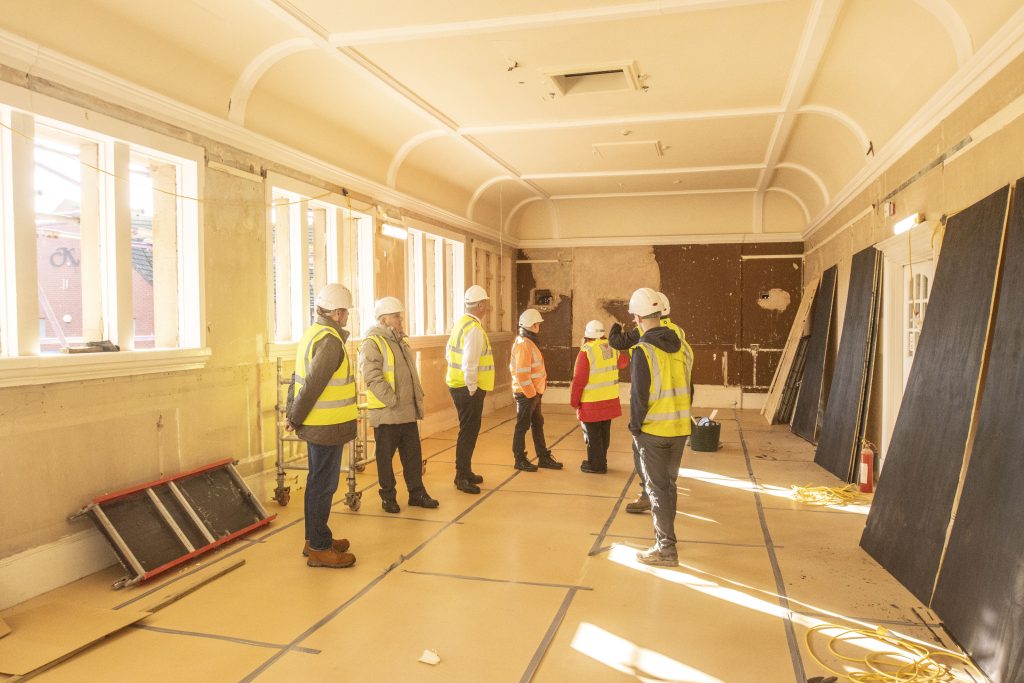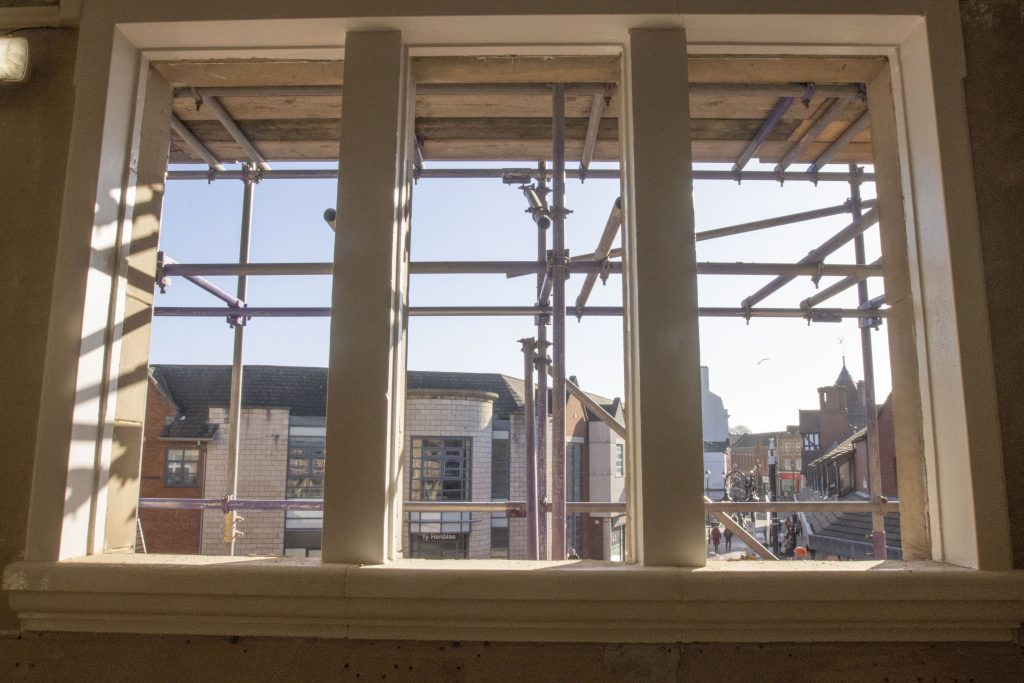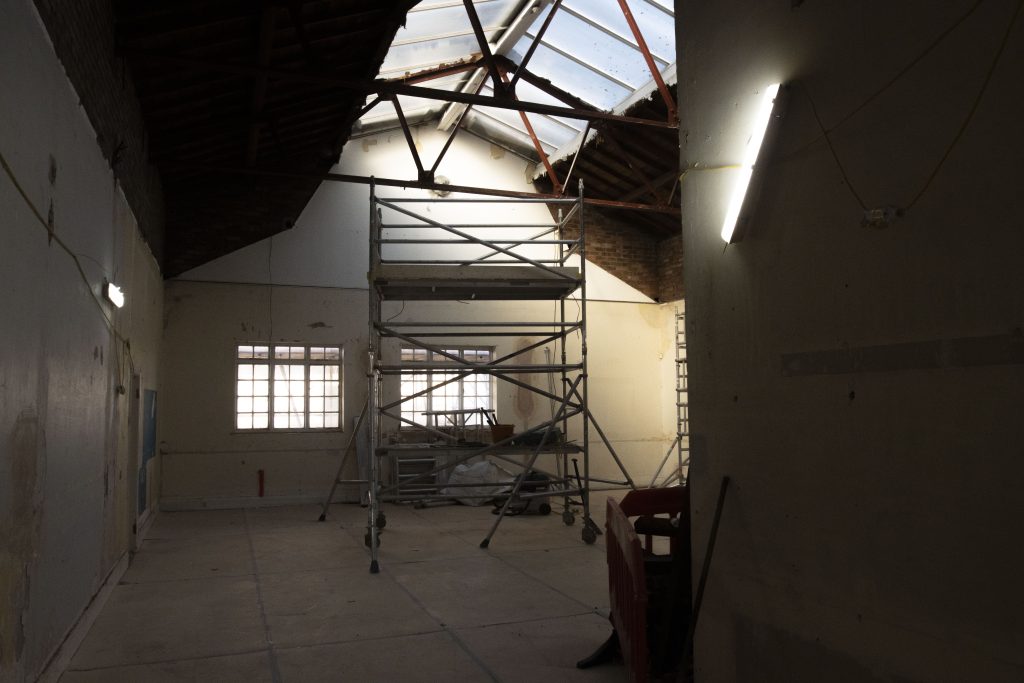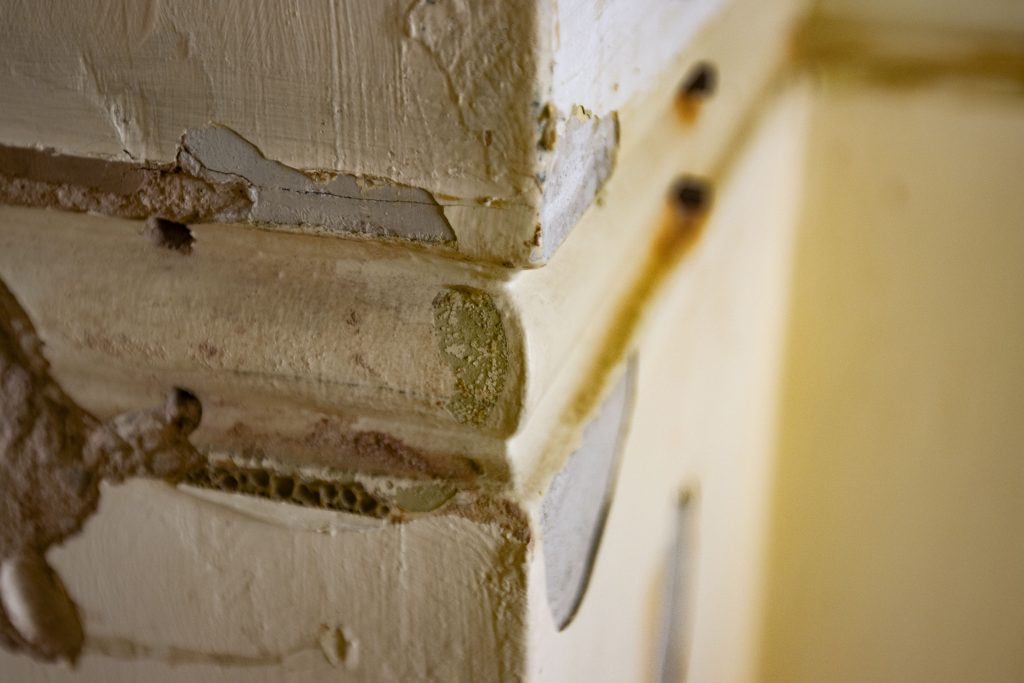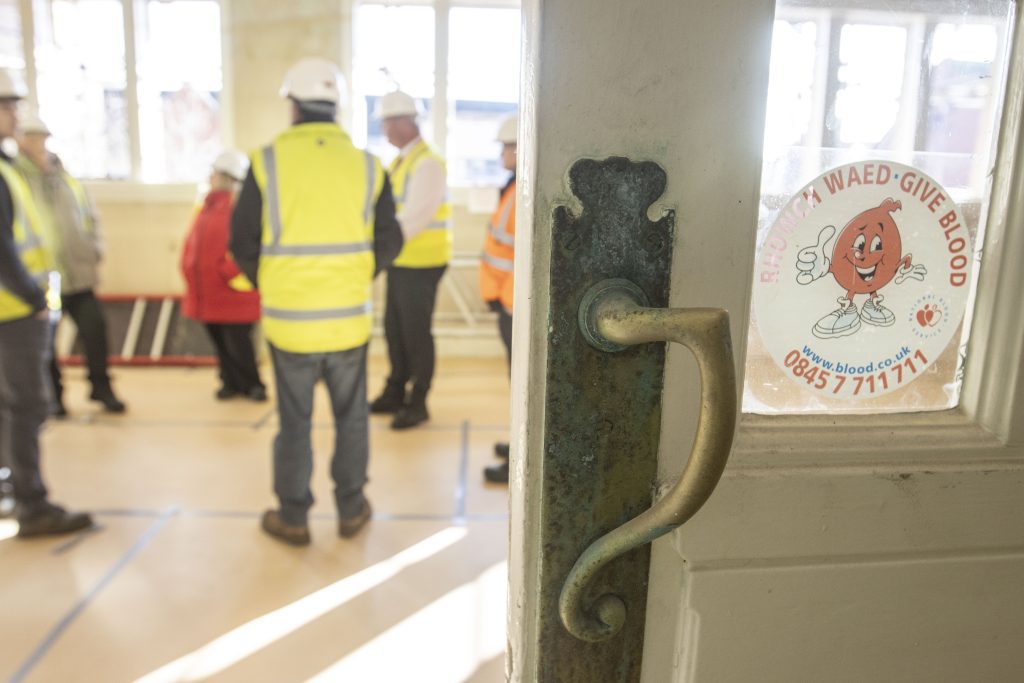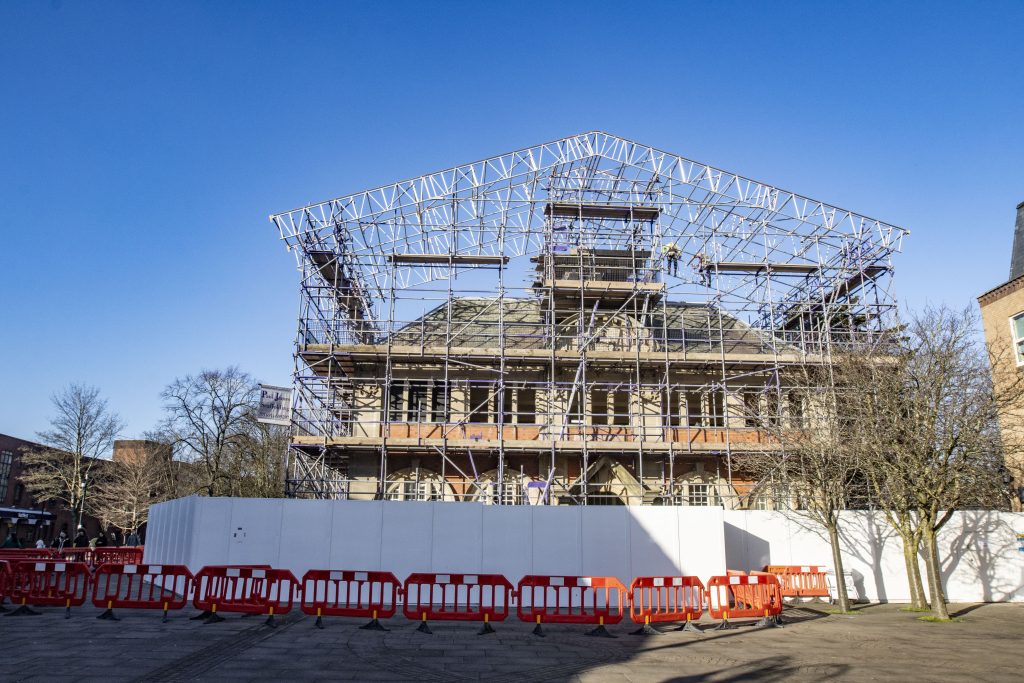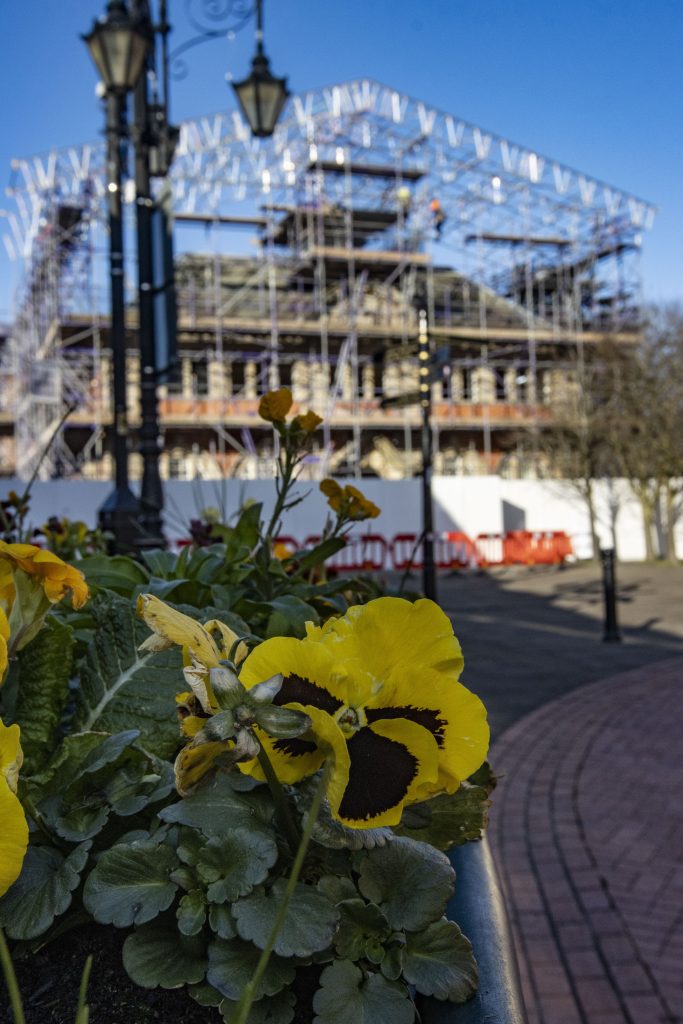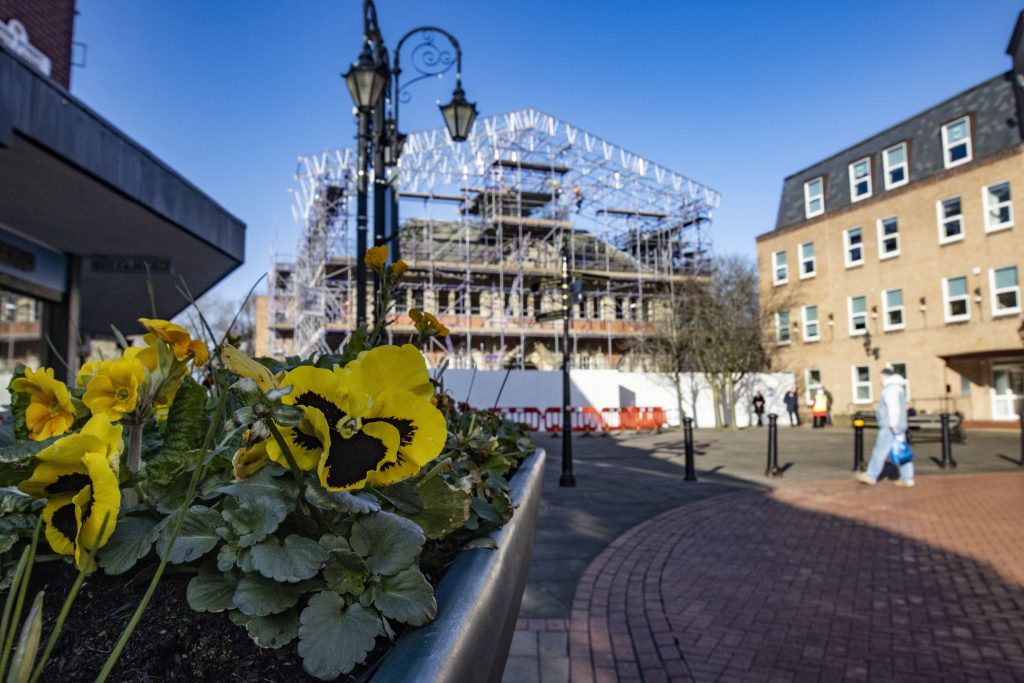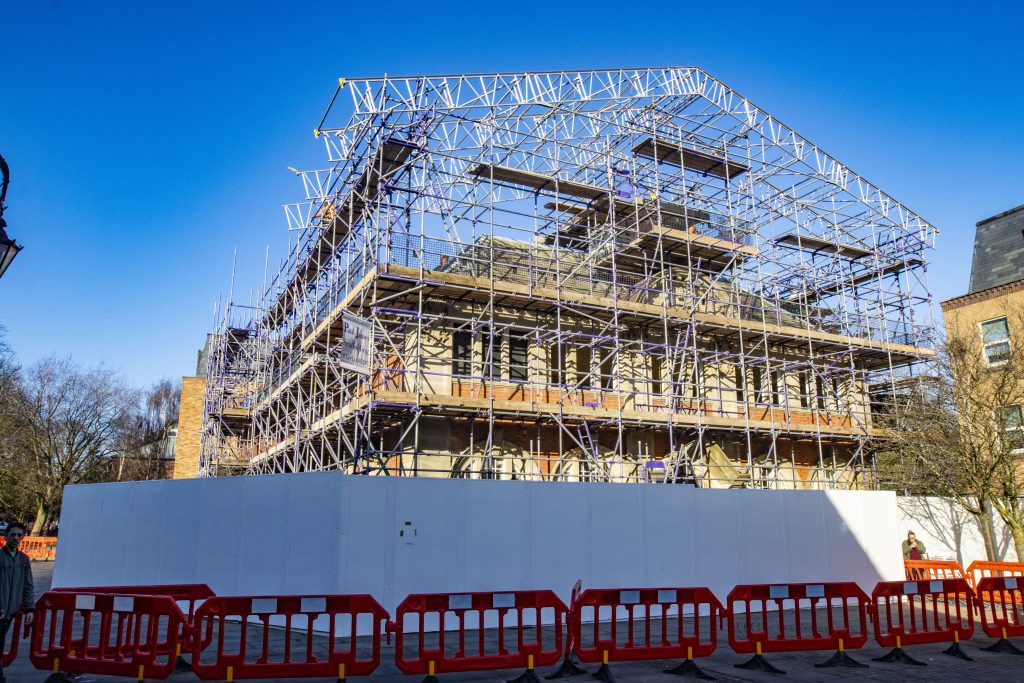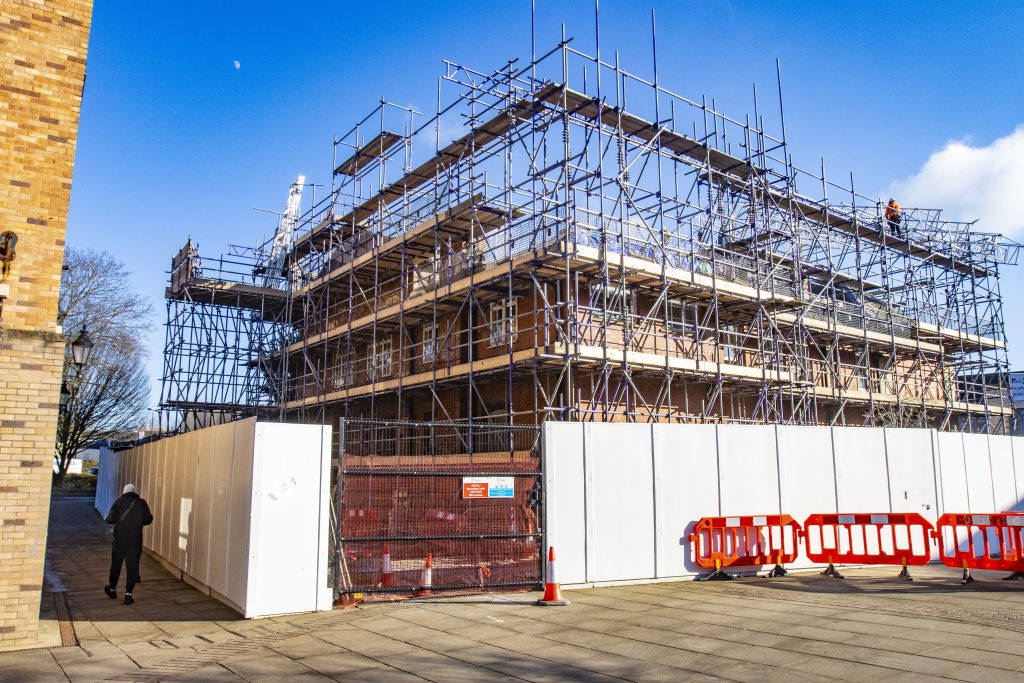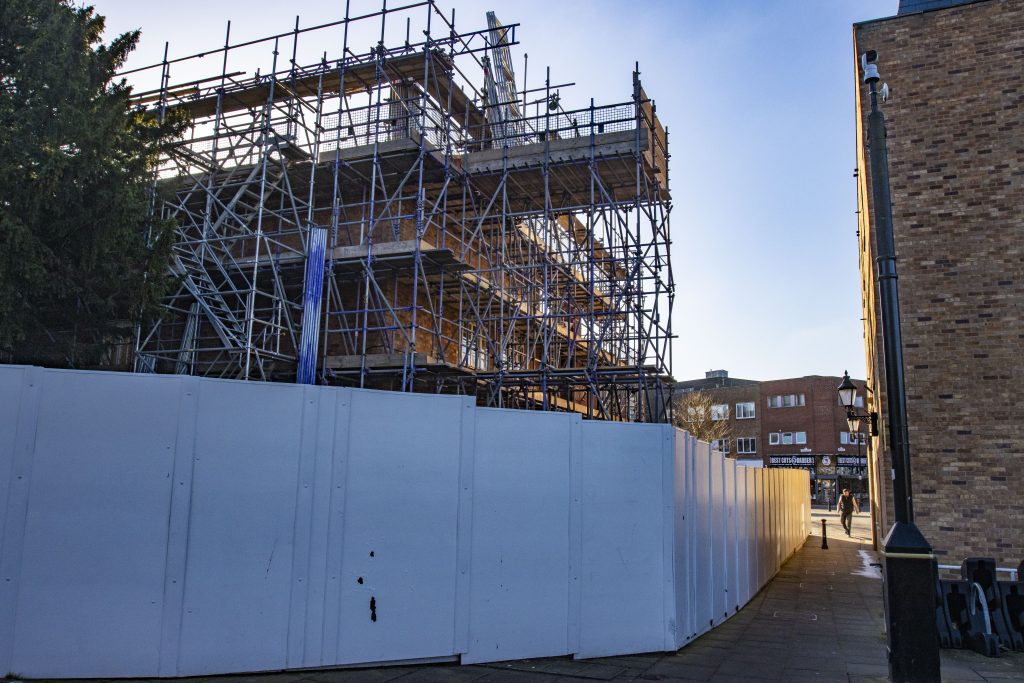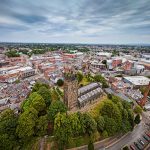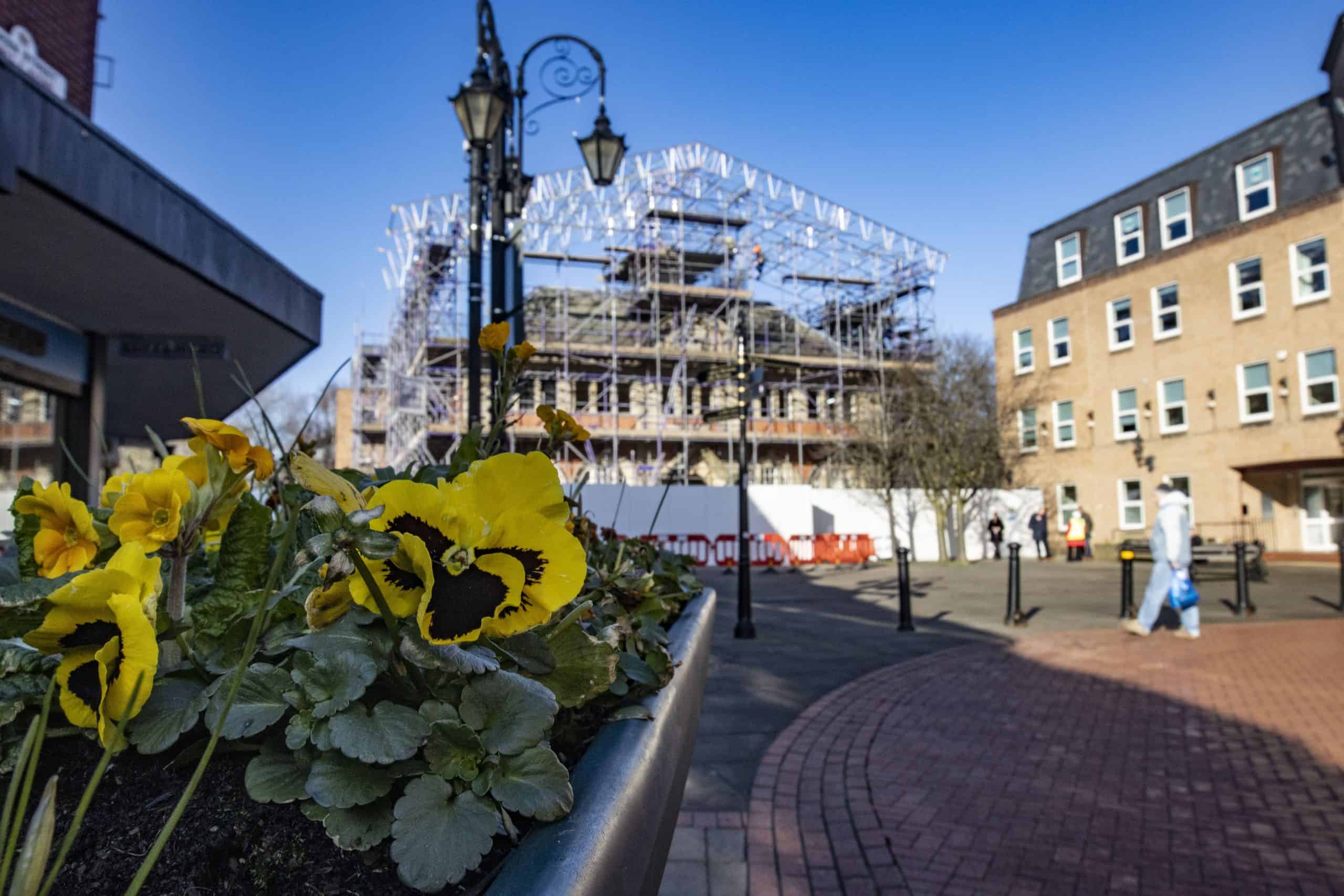Creative industries powerhouse
Work to refurbish, restore and update the Old Library located on Queens Square are continuing at pace.
The Grade II listed building will have a new role within the city centre as a creative industries powerhouse, providing long term and short term flexible rental spaces for organisations and individuals within the sector that will boost the creative and cultural ambitions for Wrexham.
About the project
The property contains three floors of rentable space that can be used as workshops, production facilities, recording studios, offices and exhibition spaces. There are also plans for the building to include a café with outdoor seating areas.
The Creative Hub will facilitate new opportunities for a growing cohort of creative professionals throughout North Wales and will provide opportunities for collaboration between the sector, local educational organisations and businesses as well as showcase arts and technology.
Studies show that the creative industry is one of the fastest growing industries and is worth a £1.4 billion in annual turnover for Wales.
Transforming the Old Library is set to cost just over £4 million representing further significant investment in Wrexham City Centre with the funding provided via UK Shared Prosperity funds, along with the Welsh Government’s Transforming Towns fund.
Leader of Wrexham Council and Lead Member for Assets Cllr Mark Pritchard said “This Grade II listed building is part of the heritage and history of Wrexham and its future use as a creative industries hub ensures that this prominent city centre building is part of our bright future.”
Lead Member for Economy and Regeneration Cllr Nigel Williams said “This project represents one of the many commitments we have made to invest in the fabric and infrastructure of our city centre as we look to grow as a forward facing ambitious city.”
Further info
Funded by Andrew Carnegie The Old Library was officially opened by Sir Foster Cunliffe of Acton Hall, on the 15th of February 1907.
The Old Library was originally constructed by using Ruabon’s historic terracotta facing brick and Cefn Stone, along with Westmoreland and Bangor Slates for the roof of the building.
